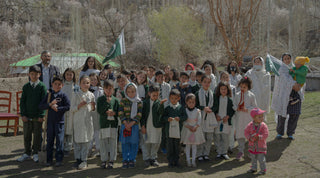Aziz, a soft-spoken village elder from Kuragh, Upper Chitral, still recalls the stories his father once told him under the cold, starry skies of the Hindukush. His father used to say, “The mountains stand tall to remind us of our limits as human beings, and the plants that grow in these sacred heights are not just part of the land, they are homes to spirits, both good and bad.”
These were not tales of fear, but of balance, a reminder that nature, spirits, animals, and humans all share a delicate relationship.
Aziz remembers his childhood vividly, spent grazing goats in the ancient Juniper forests just above his village. “The goats would be drawn to the scent of the Juniper trees,” he says, “and those trees would protect them from diseases. Even when the animals strayed, the mountain would look after them.”
But Juniper trees were not merely for grazing or shade. In Aziz’s village, they were believed to have powerful spiritual properties. Families would burn the dry branches of Juniper to ‘smoke away’ evil spirits and negative energies, especially from their young children. It was a form of natural cleansing, an age-old ritual that connected the living to the unseen world.
Aziz speaks of Shavanan, gentle mountain fairies that his ancestors believed guarded the goats.
“When we took our herds to the high summer pastures, we would call out to the Shavanan. We would shout greetings and prayers into the wind, hoping these kind spirits would protect our animals from harm.”
But things have changed.
The sacred Juniper forests that once stretched across the mountain slopes have been slowly pushed back, retreating higher and higher into the cliffs, victims of overuse as fuelwood, timber, and unchecked consumption.
“The Shavanan are gone now,” Aziz says quietly. “As the Junipers disappeared, so did they.”
Today, the bare mountains, once rich with green guardians, now stand exposed. The forests that once protected the land and its people from soil erosion, avalanches, and disease have thinned to the point where the mountain seems to strike back. Aziz and many like him believe the mountain is now chasing them—with floods, landslides, and a harsh, unforgiving climate.
“We used to live in harmony with these spirits and the plants. Now, we have nowhere to hide,” he says.
Aziz’s story is not just folklore, it is a powerful reflection of how traditional ecological knowledge can offer deep wisdom about the balance between humans and nature. The loss of Juniper forests is not just an environmental issue; it is a cultural and spiritual rupture.
There is still hope.
Communities like Aziz’s, along with conservationists and nature-led organizations, are now working to restore these forests, using sustainable methods like seedball reforestation and community-led ecological restoration programs. These efforts are not only aimed at bringing back the trees but also reviving the cultural stories, spiritual connections, and indigenous practices that once defined these mountain societies.
Perhaps, as the Junipers return, so will the Shavanan—the silent guardians of the mountains.





